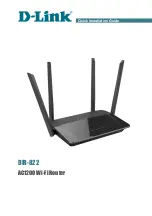
81
Configuring Cisco IOS Configuration Engine
Information About Configuring Cisco IOS Configuration Engine
Figure 5
Configuration Engine Architectural Overview
Configuration Service
Configuration Service is the core component of Cisco Configuration Engine. It consists of a configuration server that
works with Cisco IOS CNS agents on the switch. Configuration Service delivers device and service configurations to the
switch for initial configuration and mass reconfiguration by logical groups. Switches receive their initial configuration from
the Configuration Service when they start up on the network for the first time.
Configuration Service uses CNS Event Service to send and receive configuration change events and to send success and
failure notifications.
The configuration server is a web server that uses configuration templates and the device-specific configuration
information stored in the embedded (standalone mode) or remote (server mode) directory.
Configuration templates are text files containing static configuration information in the form of CLI commands. In the
templates, variables are specified using Lightweight Directory Access Protocol (LDAP) URLs that reference the
device-specific configuration information stored in a directory.
The Cisco IOS agent can perform a syntax check on received configuration files and publish events to show the success
or failure of the syntax check. The configuration agent can either apply configurations immediately or delay the
application until receipt of a synchronization event from the configuration server.
Event Service
Cisco Configuration Engine uses Event Service for receipt and generation of configuration events. The event agent is on
the switch and facilitates the communication between the switch and the event gateway on Configuration Engine.
Event Service is a highly capable publish-and-subscribe communication method. Event Service uses subject-based
addressing to send messages to their destinations. Subject-based addressing conventions define a simple, uniform
namespace for messages and their destinations.
Configuration
engine
Service provider network
Order entry
configuration management
Data service
directory
Configuration server
Event service
Web-based
user interface
141327
Summary of Contents for IE 4000
Page 12: ...8 Configuration Overview Default Settings After Initial Switch Configuration ...
Page 52: ...48 Configuring Interfaces Monitoring and Maintaining the Interfaces ...
Page 108: ...104 Configuring Switch Clusters Additional References ...
Page 128: ...124 Performing Switch Administration Additional References ...
Page 130: ...126 Configuring PTP ...
Page 140: ...136 Configuring CIP Additional References ...
Page 146: ...142 Configuring SDM Templates Configuration Examples for Configuring SDM Templates ...
Page 192: ...188 Configuring Switch Based Authentication Additional References ...
Page 244: ...240 Configuring IEEE 802 1x Port Based Authentication Additional References ...
Page 298: ...294 Configuring VLANs Additional References ...
Page 336: ...332 Configuring STP Additional References ...
Page 408: ...404 Configuring DHCP Additional References ...
Page 450: ...446 Configuring IGMP Snooping and MVR Additional References ...
Page 490: ...486 Configuring SPAN and RSPAN Additional References ...
Page 502: ...498 Configuring Layer 2 NAT ...
Page 770: ...766 Configuring IPv6 MLD Snooping Related Documents ...
Page 930: ...926 Configuring IP Unicast Routing Related Documents ...
Page 976: ...972 Configuring Cisco IOS IP SLAs Operations Additional References ...
Page 978: ...974 Dying Gasp ...
Page 990: ...986 Configuring Enhanced Object Tracking Monitoring Enhanced Object Tracking ...
Page 994: ...990 Configuring MODBUS TCP Displaying MODBUS TCP Information ...
Page 996: ...992 Ethernet CFM ...
Page 1066: ...1062 Using an SD Card SD Card Alarms ...
















































